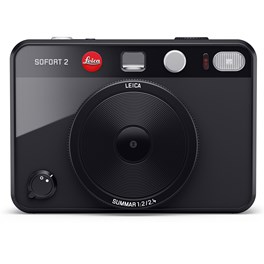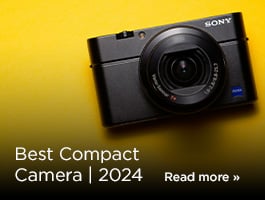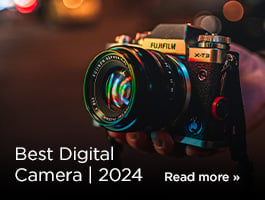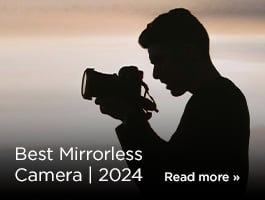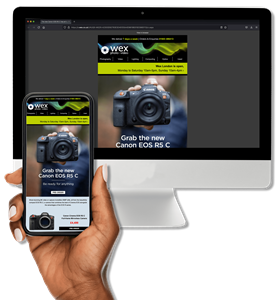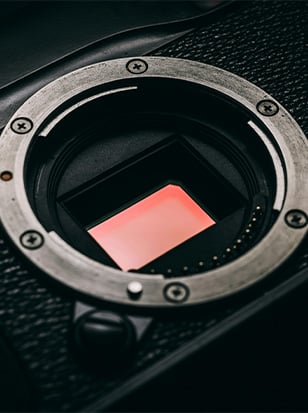
The best Leica cameras have long been practically synonymous with the best that the photography world has to offer. The first functioning 35mm film camera was a Leica, after all, and since then the German manufacturer has gone from strength to strength, producing some of the 20th Century’s most iconic film cameras before smoothly transitioning into the digital era.
Leica is known for its exacting quality standards and its commitment to highly precise manufacturing techniques. Leica cameras are only produced in a couple of places in the world, and when you see a camera with that iconic red dot, you know you’re getting something that will last and last, and keep shooting for many years. Leica film cameras that are decades old still fetch handsome prices on the second-hand market, largely because many of them still take phenomenal pictures! And the digital models are no different.
Leica’s suite of cameras is quite diverse, and we’ve done our best to include all the finest models the firm has to offer in this guide. From digital rangefinders to instant film, from high-end compacts to full-frame mirrorless, here are all the best Leica cameras you can buy in 2025.
Best Leica digital cameras
Leica’s range of digital interchangeable lens cameras incorporates two distinct lines. First, there are the M-mount digital rangefinder cameras. Heirs apparent to the analogue rangefinders that built Leica’s reputation, these sublime shooters use a manual rangefinder focusing method, which requires the user to align two images in the viewfinder. It can be tricky to learn, but it’s thrilling to master, not to mention fast, and many photographers find that once they start shooting on a rangefinder, it’s tough to go back.
Alternatively, there are Leica’s digital mirrorless cameras, which use L-mount lenses. These full-frame cameras still offer fantastic image quality, but with modern conveniences like cutting-edge autofocus. Having the L-mount puts not just Leica-made lenses in play, but also some excellent optics made by Sigma and Panasonic, thanks to the ongoing alliance between the three manufacturers. </>
|
Pros:
Cons:
|
Sensor: 60MP Full-Frame BSI CMOS Lens: M-Mount (interchangeable) Autofocus: Manual focus only Video: Not available (stills-only camera) Screen: 2.95-inch LCD with touch functionality |
The latest generation of digital rangefinder, the Leica M11 is a modern masterpiece. Its full-frame sensor uses a triple-resolution design that has become common among Leica cameras (as we’ll see). It allows you to shoot at the maximum resolution of 60MP, or cut down to 36MP or 18MP for those times when you need to prioritise speed and card space over detail. The large bright-line rangefinder is the best ever implementation of this classic focusing technology, providing an immersive and immediate shooting experience.
There are also multiple other versions of the Leica M11 that are worth considering if your tastes run to the specific. The Leica M11 Monochrom is a version of the rangefinder camera that does away with the colour filter array to deliver the ultimate in sharpness – in black and white only. The Leica M11-D offers the ultimate in purity, a no-frills shooter that doesn’t even have a rear screen; the Leica M11-P, meanwhile, is a similarly minimalist offering that also allows you to use Leica’s Content Credentials system to digitally authenticate and protect your images.
|
Pros:
Cons:
|
Sensor: 24MP Full-Frame BSI CMOS Lens mount: L-Mount (interchangeable) Autofocus: Phase-detect hybrid AF Video: 4K/60fps, 10-bit internal recording Screen: 3.2-inch tilting touch LCD |
Commemorating Leica’s 100th anniversary, this special-edition mirrorless camera also happens to be one of the fastest that Leica has ever created, with a 30fps burst mode for capturing fast-moving subjects. Thanks to the 779-point PDAF hybrid autofocus system with advanced subject tracking, you can be sure the SL-3S will keep up. The dual card slots support both CFexpress and SD UHS-II, ensuring your storage media will be able to keep up with your fast shooting speeds.
This is also a camera built tough, with IP54 weather sealing that means it’s equipped to be taken out into rain, wind, hail and snow. The L-mount gives you plenty of flexible lens options, and the broad ISO range of 100-200,000 means you have a good amount of latitude when the light gets low. It’s also no slouch for video, being capable of 6K open-gate recording (meaning it uses the full width of its sensor).
Best Leica digital compacts
Leica has built up an impressive range of digital compacts, with plenty of options for photographers who want an all-in-one shooting package with that signature Leica look and feel. From the sublime street-shooting Q series to the more affordable D-Lux cameras, the Leica compact range includes some of the most outstanding cameras we’ve ever tested.
Ergonomic controls, high-quality sensors, pin-sharp lenses — Leica compacts offer pretty much everything you could want from an all-in-one camera. Multiple lens options allow you to choose the compact that best suits your style of shooting, and the top-end build quality means that a Leica compact can be your shooting partner for many happy years to come.
|
Pros:
Cons:
|
|
The latest of the Leica Q compacts, the Leica Q3 43 takes essentially the same feature-set as the original Leica Q3, but swaps out its 28mm lens for a 43mm optic. This narrower perspective is great for street and day-to-day photography, allowing you to maintain a little more distance from your subjects.
That means on the inside, you still get all the sublime features that made the Leica Q3 one of the finest high-end compacts ever made. The full-frame 60MP sensor has got resolution to spare, allowing you to shoot at lower resolutions to simulate a tighter focal length without any loss in quality. The autofocus is a peerless hybrid system, combining contrast metering, depth mapping and phase comparison metering to deliver unparalleled speed and accuracy.
The Q3 43 is also an absolute beast in low light, delivering superb noise-control performance even as the ISO is pushed up towards its maximum of 100,000. Highly capable and a pleasure to use, both this and the Q3 are equally capable and which one you go for is mostly a matter of personal preference. Either one could quite easily be the last camera you ever buy.
|
Pros:
Cons:
|
Sensor: 17MP Four-Thirds CMOS Lens: Fixed 10.9-34mm f1.7-2.8 (24-75mm equivalent) Video: 4K UHD at 30fps for high-quality video capture Controls: Manual dials for aperture, shutter speed, and exposure compensation Size: Compact, lightweight body for travel-friendly portability |
The premium Leica Q series naturally won’t be suitable for everyone, but if you want to get a top-end Leica compact shooting experience without the high price tag, consider the Leica D-Lux 8. While it uses a smaller Four Thirds sensor, the D-Lux 8 takes plenty of ergonomic cues from the Leica Q3, and it’s an easy and enjoyable camera to use.
The Leica DC Vario-Summilux lens on the front is a 24-75mm equivalent, covering a lot of your bases photographically and making this an excellent choice of compact camera for travel. It’s also the first D-Lux camera to offer the DNG RAW shooting format, giving you lots of flexibility for editing your images to perfection in post-processing. The high-resolution real-time OLED electronic viewfinder is delightful to compose on, and should you wish to add video to your shooting repertoire, you can do so with 4K 30p recording.
Best Leica film cameras
Leica’s enviable legacy originates in the days of film, and Leica film cameras are still some of the most finely engineered tools you can buy in the photographic world. A Leica film camera that’s well-maintained can keep on shooting for decades. What’s more, Leica has released modernising reissues of some of its classic film cameras, retaining what worked so well about them in the past while also adding a few features for the 21st century user.
Leica also produces instant film cameras, for those who love the knockabout charm of this type of photography. Significantly more affordable than the manufacturer’s mainline cameras, but still with all the fine craftsmanship and attention to detail that Leica is known for, these cameras offer an elevated instant photography experience.
|
Pros:
Cons:
|
Format: 35mm film rangefinder camera Lens Compatibility: Leica M-Mount, supporting legendary Leica optics Viewfinder: Bright optical rangefinder with 0.72x magnification Build: All-metal construction with mechanical shutter Metering: Built-in light meter |
The original Leica M6 was rightly a legend. First released in 1984, it has endured as one of the most beloved film rangefinder cameras ever made, with models still commanding high prices on the second-hand market. In 2022, responding to renewed interest in film photography, Leica unveiled a reissue of this camera, incorporating some of the technology from its newer digital cameras while staying true to the design and feel of the original M6.
So, here you get a beautiful Leica rangefinder in all its glory, with that whip-fast focusing and that satisfying weight in the hand. But you also get a few modern conveniences, like a new ISO dial with electronic components and a new, improved light meter. The body is now full brass and the viewfinder offers 0.72x magnification. Just like the old M6, this reissue operates incredibly smoothly, and provides a one-of-a-kind photographic experience that has to be felt to be understood. Photographic perfection? This might just be it.
|
Pros:
Cons:
|
Format: Hybrid instant camera with both digital and print capabilities Lens: Fixed 28mm (equiv.) f2.0 for sharp, wide-angle shots Creative Modes: Multiple shooting filters and double exposure Screen: 3-inch LCD with touch functionality |
Instant photography has been enduringly popular for decades now — and here’s your chance to enjoy its charms with a Leica twist. The Sofort 2 is a fairly simple but beautifully made instant camera, producing instant prints of your images at the press of a button. While there isn’t much in the way of manual control of settings like aperture and shutter speed, you do get a suite of creative filters and effects to play with. You can add blur or vignette to your images, simulate a light leak, experiment with double exposures, or much more. The Sofort 2 is also a surprisingly capable close-up camera, able to focus in at distances as shot as 10cm for macro images.
The Leica Sofort 2 doesn’t just automatically print each image you shoot — you can choose which ones to commit to a physical print via your phone and the Leica FOTOS app. This makes it a whole lot less likely that you’ll accidentally burn a frame on a misfire or a fat-fingered mistake — which is a bit of extra peace of mind.
FAQs
Why are Leica cameras so expensive?
Leica cameras are expensive due to their precision engineering, high-quality materials, and meticulous hand assembly. They use premium optics, robust metal construction, and advanced technology to ensure durability, exceptional image quality, and a unique shooting experience.
Are Leica cameras worth the money?
For photographers who value craftsmanship, timeless design, and outstanding image quality, Leica cameras are worth the investment. They offer incredible optical performance, durable build quality, and a shooting experience that prioritises simplicity and creativity.
Do Leica cameras take better photos?
Thanks to their lenses, larger sensors, and excellent colour science, Leica cameras do indeed produce stunning images. While technical performance depends on the photographer, Leica’s optical precision and image rendering set them apart. They're best known for low-light images and for portraits.
Why do professionals use Leica cameras?
Professionals choose Leica for its sharp, high-contrast lenses, intuitive manual controls, and reliable build quality. The discreet, compact design also makes them ideal for street, documentary, and travel photography, allowing photographers to capture moments naturally.
What makes Leica lenses special?
Leica lenses are handcrafted with extreme precision, using the highest-quality glass and coatings for sharpness, clarity, and true-to-life colours. Their optical performance guarantees minimal distortion, excellent bokeh, and exceptional results even in challenging lighting conditions.
How do we decide?
Our in-house photography experts, store staff and partners all work collaboratively to pour over our guides and tips articles. We also consider emerging trends and customer feedback to make sure our guides are always up-to-date and reflective of what people are truly looking for. By curating only the best products, our guides provide trustworthy recommendations, making it easier for customers to make informed choices with confidence.
If you would like more advice on any purchase our contact centre staff are here to help. Alternatively, you can reach us via email or social media. And don't forget. If you were to purchase anything based on our recommendations you'll be covered by our full returns policy





